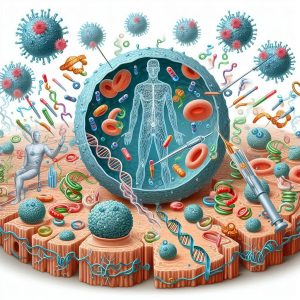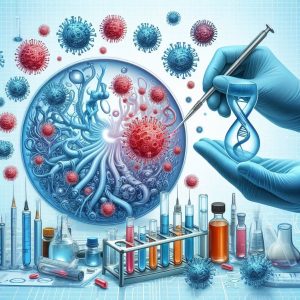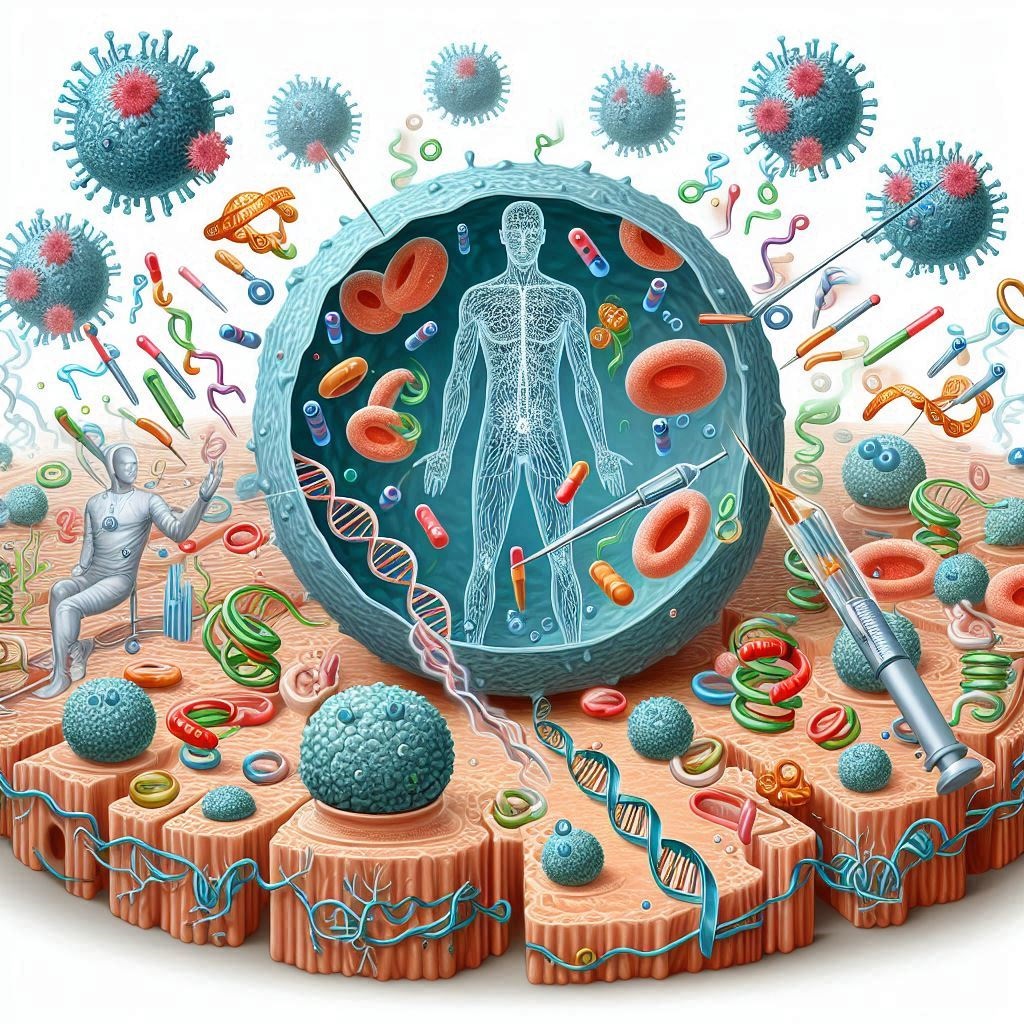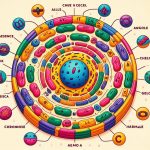Introduction to Gene Therapy
Gene therapy represents a revolutionary approach in medicine aimed at treating or even curing genetic disorders by modifying genes within a patient’s cells. This cutting-edge technique has the potential to address the root causes of many genetic conditions, offering hope for diseases that were previously considered incurable.
Mechanisms of Gene Therapy
Gene therapy works through various methods, including gene editing, where specific genes are altered to correct mutations, and gene replacement, where a functioning gene is inserted to replace a defective one. Techniques such as CRISPR-Cas9 and viral vectors are commonly used to deliver therapeutic genes into target cells.

Mechanisms of Gene Therapy
Gene therapy employs various mechanisms to treat or cure genetic disorders by modifying the genetic material of a patient’s cells. These techniques can be broadly categorized into several key approaches, each with its specific methods and applications.
1. Gene Editing
Gene editing involves directly altering the DNA sequence within a cell. Techniques such as CRISPR-Cas9 allow for precise modifications, such as correcting mutations or inserting new genetic material. This method holds promise for treating genetic disorders by targeting the root cause of the disease.
2. Gene Replacement
Gene replacement involves introducing a functional gene copy into a patient’s cells to replace a defective or missing gene. This approach is particularly useful for treating inherited genetic disorders where a specific gene is non-functional or absent.
3. Gene Silencing
Gene silencing techniques are used to suppress the expression of harmful genes. Methods such as RNA interference (RNAi) utilize small RNA molecules to target and degrade specific mRNA transcripts, thereby preventing the production of deleterious proteins.
4. Viral Vectors
Viral vectors are commonly used to deliver therapeutic genes into target cells. Viruses, such as adenoviruses or lentiviruses, are modified to carry therapeutic genes without causing disease. These vectors facilitate the introduction of new genetic material into cells, where it can then be expressed and utilized.
5. Ex Vivo and In Vivo Approaches
Ex vivo gene therapy involves modifying cells outside the patient’s body, which are then transplanted back into the patient. In contrast, in vivo gene therapy directly delivers therapeutic genes to cells within the patient’s body. Both approaches have specific applications depending on the condition being treated and the method of delivery.
Table of Gene Therapy Techniques
| Technique | Description | Applications |
|---|---|---|
| CRISPR-Cas9 | Gene-editing tool for precise DNA modifications. | Genetic disorders, cancer research |
| Gene Replacement | Inserting a healthy gene to replace a defective one. | Inherited genetic disorders |
| Gene Silencing | Suppressing harmful gene expression through RNA molecules. | Gene-related diseases |
| Viral Vectors | Using modified viruses to deliver therapeutic genes. | Various genetic conditions |
| Ex Vivo and In Vivo |
|
Specific to the type of therapy |
Current Applications and Success Stories in Gene Therapy
The application of gene therapy has shown promising results in treating a variety of conditions. For instance, gene therapy for cancer aims to enhance the body’s immune response to target and destroy cancer cells. Similarly, successful trials in treating genetic disorders like spinal muscular atrophy (SMA) demonstrate the transformative potential of this approach.
1. Treatment of Genetic Disorders
Gene therapy has revolutionized the treatment of genetic disorders. A prominent example is Zolgensma, an FDA-approved therapy for spinal muscular atrophy (SMA). This therapy involves delivering a functional copy of the SMN1 gene to restore the production of a crucial protein, dramatically improving patient outcomes and offering long-term benefits.
2. Advances in Cancer Treatment
Gene therapy is also making a significant impact in cancer treatment. CAR-T cell therapy has emerged as a groundbreaking approach where patients’ T-cells are modified to target and kill cancer cells. Kymriah, developed by Novartis, is a prime example, showing impressive results in treating relapsed or refractory large B-cell lymphoma.
3. Inherited Retinal Diseases
In the field of ophthalmology, gene therapy has been transformative. Luxturna is a notable example that delivers a copy of the RPE65 gene directly to retinal cells, restoring vision in patients with specific inherited retinal dystrophies. This therapy has been a game-changer for those suffering from otherwise untreatable vision loss.
4. Rare Genetic Disorders
Gene therapy is also addressing rare genetic disorders. Glybera, the first gene therapy approved in Europe, targets lipoprotein lipase deficiency (LPLD), a rare condition affecting lipid metabolism. Although its market availability is limited, it represents a significant milestone in treating rare genetic diseases.
5. Hematological Disorders
Gene therapy is also showing promise in treating hematological disorders. Gene editing for sickle cell disease is an exciting area of research where techniques like CRISPR-Cas9 are used to correct mutations in the beta-globin gene, potentially offering a cure for this debilitating condition.
6. Promising Research and Trials
The field of gene therapy is constantly evolving with promising research and clinical trials. Therapeutic vaccines are being developed to target chronic diseases and cancers, offering new hope for patients. Additionally, novel delivery systems are enhancing the effectiveness of gene therapies, making treatments more accessible and efficient.
Table of Success Stories in Gene Therapy
| Therapy | Target Condition | Key Achievement |
|---|---|---|
| Zolgensma | Spinal Muscular Atrophy (SMA) | First gene therapy approved for SMA, providing long-term benefits |
| Kymriah | Certain types of lymphomas and leukemias | CAR-T cell therapy showing high response rates in trials |
| Luxturna | Inherited Retinal Dystrophies | Restored vision in patients with RPE65 gene mutations |
| Glybera | Lipoprotein Lipase Deficiency (LPLD) | First approved gene therapy in Europe for a rare genetic disorder |
Challenges and Future Directions
Despite its potential, gene therapy faces several challenges, including high costs and safety concerns regarding off-target effects and long-term efficacy. Ongoing research aims to address these issues and make gene therapy more accessible and effective for a broader range of conditions.
Table of Gene Therapy Techniques
| Technique | Description | Applications |
|---|---|---|
| CRISPR-Cas9 | A gene-editing tool that allows for precise modifications of the DNA sequence. | Genetic disorders, cancer research |
| Viral Vectors | Viruses modified to deliver therapeutic genes into target cells. | Genetic diseases, gene replacement therapies |
| Gene Replacement | Inserting a healthy gene to replace a defective one. | Inherited disorders, rare genetic conditions |
Challenges and Future Directions in Gene Therapy details
1. Safety and Ethical Concerns
One of the major challenges in gene therapy is ensuring safety and addressing ethical concerns associated with genetic modifications. Issues such as potential off-target effects, long-term consequences, and the ethical implications of germline editing remain critical areas of focus in ongoing research and regulatory discussions.
2. High Costs and Accessibility
The high cost of gene therapies is another significant challenge. Treatments like Zolgensma can cost millions of dollars, limiting accessibility for many patients. Efforts are underway to develop more cost-effective production methods and broaden access through policy changes and insurance coverage.
3. Delivery Mechanisms
Effective delivery of gene therapies remains a technical hurdle. Ensuring that therapeutic genes reach the intended cells and tissues without causing adverse effects is crucial for the success of gene therapy. Advances in delivery systems, such as viral vectors and nanoparticle carriers, are being explored to improve efficiency and targeting precision.
4. Expanding Therapeutic Targets
Future directions in gene therapy include expanding the range of therapeutic targets. Research is increasingly focusing on complex diseases like cancer, cardiovascular disorders, and neurological conditions. Innovations in gene editing technologies, such as CRISPR, are paving the way for new treatment possibilities and personalized medicine.
5. Regulatory and Policy Issues
Navigating the regulatory landscape for gene therapies is complex and varies globally. Regulatory bodies like the FDA and EMA have established guidelines, but harmonization across different regions remains a challenge. Addressing these regulatory hurdles is essential for accelerating the development and approval of new therapies.
6. Long-Term Efficacy and Durability
Ensuring the long-term efficacy and durability of gene therapies is a key challenge. While initial results are promising, understanding the longevity of therapeutic effects and potential for late-onset adverse events is essential for evaluating the true impact of gene therapies. Ongoing long-term studies are crucial for assessing the sustainability of therapeutic benefits.
7. Public Perception and Acceptance
Public perception and acceptance of gene therapy can influence its adoption and implementation. Concerns about genetic modification, potential misuse, and long-term effects can impact public trust. Educating the public, addressing concerns transparently, and fostering an open dialogue about the benefits and risks of gene therapy are essential for broader acceptance.
Table of Key Challenges and Future Directions in Gene Therapy
| Challenge/Direction | Description | Related Link |
|---|---|---|
| Safety and Ethical Concerns | Ensuring safety and addressing ethical implications of genetic modifications | Nature – Safety in Gene Therapy |
| High Costs and Accessibility | The high cost of treatments and efforts to improve accessibility | Forbes – Cost of Gene Therapy |
| Delivery Mechanisms | Challenges in ensuring effective delivery of gene therapies to target cells | NCBI – Gene Therapy Delivery |
| Expanding Therapeutic Targets | Research on new targets and expanding gene therapy applications | Nature – Expanding Targets |
| Regulatory and Policy Issues | Challenges in regulatory approval and policy for gene therapies | NCBI – Regulatory Issue |
What are Viral Vectors?
Viral vectors are modified viruses that have been engineered to carry therapeutic genes. These vectors are stripped of their pathogenic properties, making them safe for use in humans. The ability of viruses to efficiently enter cells and deliver genetic material makes them ideal tools for gene therapy.

Types of Viral Vectors
Several types of viral vectors are commonly used in gene therapy. Each type has unique characteristics that make it suitable for different therapeutic applications.
1. Adenoviral Vectors
Adenoviral vectors are derived from adenoviruses, which cause respiratory infections. They can infect a wide range of cell types and are used for their high transduction efficiency. However, they do not integrate into the host genome, which can limit the duration of their effect.
2. Retroviral Vectors
Retroviral vectors are based on retroviruses, which have the unique ability to integrate their genetic material into the host genome. This integration can lead to long-term expression of the therapeutic gene. However, there is a risk of insertional mutagenesis, which can disrupt normal gene function.
3. Lentiviral Vectors
Lentiviral vectors, a subset of retroviruses, can infect both dividing and non-dividing cells. This broadens their application range and makes them particularly useful for gene therapy targeting the central nervous system and hematopoietic stem cells.
4. Adeno-Associated Viral Vectors (AAV)
AAV vectors are derived from adeno-associated viruses, which are non-pathogenic and can infect a wide variety of cell types. They offer stable gene expression with minimal immune response, making them highly suitable for clinical applications.
| Viral Vector | Characteristics | Applications |
|---|---|---|
| Adenoviral Vectors | High transduction efficiency, non-integrating | Vaccines, cancer therapy |
| Retroviral Vectors | Integrate into host genome, long-term expression | Gene editing, stem cell modification |
| Lentiviral Vectors | Infect non-dividing cells, broad application | Neurodegenerative diseases, hematopoietic disorders |
| AAV Vectors | Stable expression, low immune response | Inherited retinal diseases, muscular dystrophy |

Applications of Viral Vectors in Gene Therapy
Viral vectors have enabled significant advancements in gene therapy, offering new treatment possibilities for various genetic disorders and diseases.
1. Inherited Disorders
Gene therapy using viral vectors has shown promise in treating inherited disorders such as cystic fibrosis, hemophilia, and muscular dystrophy. By delivering functional copies of defective genes, these therapies can potentially correct the underlying genetic causes of these conditions.
2. Cancer Treatment
Viral vectors are being used to develop innovative cancer treatments. For example, oncolytic viruses selectively infect and destroy cancer cells, while viral vectors can deliver genes that enhance the immune system’s ability to target tumors.
3. Vaccines
Viral vectors are instrumental in the development of vaccines, including those for infectious diseases like COVID-19. These vectors can deliver antigens that stimulate a robust immune response, providing protection against pathogens.

Challenges and Future Directions
Despite their potential, the use of viral vectors in gene therapy faces several challenges. These include ensuring precise targeting, avoiding immune responses, and achieving long-term expression of therapeutic genes. Ongoing research aims to address these issues and improve the safety and efficacy of viral vector-based therapies.
1. Improving Targeting Specificity
Researchers are developing viral vectors that can specifically target diseased cells while sparing healthy ones. This precision targeting minimizes potential side effects and enhances the therapeutic effect.
2. Reducing Immune Responses
Modifying viral vectors to reduce their immunogenicity is crucial for repeated administration of gene therapy. Techniques such as capsid engineering and immune evasion strategies are being explored to achieve this goal.
3. Enhancing Long-Term Expression
Achieving sustained expression of therapeutic genes is vital for the long-term success of gene therapy. Innovations in vector design and delivery methods are being developed to ensure stable and prolonged gene expression.
FAQs about Gene Therapy
1. What is gene therapy?
Gene therapy involves the introduction, removal, or alteration of genetic material within a person’s cells to treat or prevent disease. It aims to address the underlying genetic causes of diseases by correcting defective genes or providing new ones to combat illness. For a detailed overview, visit GenomeWeb.
2. What types of diseases can gene therapy address?
Gene therapy holds potential for treating a range of genetic disorders including rare conditions like spinal muscular atrophy and retinal dystrophies. It is also being explored for broader applications such as cancer treatment and cardiovascular diseases.
3. How is gene therapy delivered to the cells?
Gene therapy can be delivered through various methods including viral vectors (such as adenoviruses and lentiviruses) or non-viral methods like nanoparticles and electroporation. These vectors are designed to transport the therapeutic genes into target cells where they can exert their effects.
4. What are the potential risks of gene therapy?
Gene therapy can pose risks such as immune reactions, off-target effects, and potential genetic mutations. Comprehensive testing and monitoring are essential to manage these risks and ensure the safety and efficacy of the treatment.
5. How are gene therapies regulated?
Gene therapies are regulated by agencies like the FDA in the United States and the EMA in Europe. These agencies ensure that gene therapies meet rigorous standards for safety, efficacy, and quality before approval for clinical use.
6. What are the current limitations of gene therapy?
Current limitations include the high cost of treatment, challenges in delivery, and long-term safety concerns. Advances in technology and research are needed to address these issues and improve the accessibility and effectiveness of gene therapies.
7. How can patients find out if gene therapy is right for them?
Patients interested in gene therapy should consult with their healthcare provider or a specialist in genetic medicine. A thorough evaluation of the patient’s condition, potential benefits, and risks will help determine if gene therapy is a suitable option. Additionally, participation in clinical trials may be an option for accessing emerging therapies.
Disclaimer
The content provided in this article is for informational purposes only and should not be construed as medical advice. Gene therapy is a complex and evolving field, and the information may not cover all aspects or latest developments. Always consult with a qualified healthcare provider for personal medical advice and treatment options.
Caution
Gene therapy involves advanced and experimental techniques that may have unknown long-term effects. Patients should be aware of the potential risks and uncertainties associated with gene therapy. It is important to have detailed discussions with healthcare professionals and consider all available information before proceeding with any gene therapy treatment.




